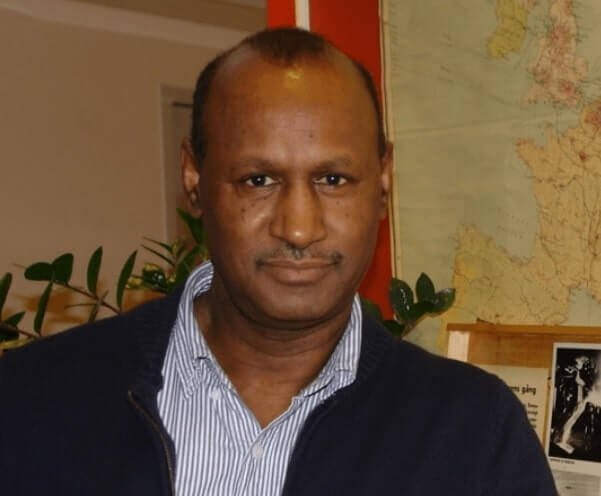
Tsegaye Tegenu (PhD)
At the end of 2021, the Ethiopian Parliament adopted a law establishing a National Dialogue Commission. One of the objectives of the Commission is to end the ongoing armed conflicts and promote nonviolent political movement and actions in the country. But dialog alone is not enough for creating peace. A certain level of economic prosperity is necessary for a large proportion of young people in Ethiopia to be motivated and join peaceful protest and democratic movements.
Economic prosperity (sufficient wealth at once disposal plus a feeling of wellness around it) is necessary for democratic and nonviolent political movement. It provides resources for peaceful political protest and actions as has been witnessed in the more economically developed western countries. Without sufficient resources in the society, there is no peaceful and nonviolent political movement. Economic prosperity and peace are mutually reinforcing. In this article I will try to discuss the need and challenges of creating an economic prosperity roadmap for the country.
What is an economic prosperity roadmap?
An economic prosperity roadmap is a visual representation of vision, missions and strategies of a self-reliant, all-inclusive, and sustained economic growth and structural transformation. It defines long-term government goals (“what” to achieve), and ties together the strategies needed to reach the goals (the "why" and “how” questions), specifies the missions (who do we do it for) and a timeline for completion (the "when" question). The roadmap is “an extended look at the future”, covering a generation, an average period of 20-25 years.
Economic prosperity roadmap provides numerous vital benefits for the country. First it aligns policies with strategies. A policy is the principles or the protocols to guide decisions (often in recurring situations). For instance, agricultural policy must focus on smallholders’ farmers. But can smallholders have the capacity to adopt technology? Another example is on the choice of industrial sectors and products. Industrial policy must focus on consumer goods and not on fertilizer, iron and steel industries; or export-led growth versus import substitution industrialization. Policy defines the limits (do’s and don’ts) within which decisions must be made.
However, there is no consensus on policy choices. Policy choice can be value driven related to the political ideology of the party holding government offices. It can also emanate from the desire to benefit powerful economic interest groups such as multinational companies or ethnic entrepreneurs.
Policies have thus an alignment problem. Even if it seems that policy responsible bodies are moving in much the same direction, differences in conceptualization and interest ends up moving in multiple directions, sometimes, maybe even often, in opposition. The attempt not to get in another’s policy areas and respect for a given policy domain is contrary to common-sense expectation. In a kindly manner to avoid interest conflict, policy responsible bodies hunker down and work without the kind of coordination. Even if not intentionally, policy responsible bodies may work against one another.
Roadmap strategies are needed to make sure the collective impact of everyone’s individual efforts pays off in the bigger picture. Strategies provide consensus regarding priorities and required actions. The outcomes of policies are judged against strategy goals not against planned outputs.
I define strategy as an established goal of a vision and a shared purposeful activity (sub-strategies) that cannot be interrupted by policy differences and issues. Strategies emanate from the assessment of the environment (current challenges and future uncertainties), and this helps to prioritize so that one can do the right things at the right time. Roadmap strategy thinking as a future-oriented awareness makes you never lose sight of the choice of goals and policies.
Not only that roadmap strategy promotes communication across various key stakeholders, but its’ very formulations also give chance to voice about people’s collective future. A roadmap strategy that is formulated on the perspectives and voices of the public has greater chance of successful implementation. The process of building a roadmap strategy document generates an understanding and a knowledge that the success of one aid the success of all.
In Ethiopia there is a lack of vision-strategy thinking which aligns and prioritize policies. The government does not use a roadmap thinking to explain and justify the kind of policies it decided to implement. There is vision-strategy blindness and lack of discussion on what the economy ought to be.
By 2050 Ethiopia’s population is projected to reach 174 million to become the 9th largest country in the world. Are we prepared for that? How is the government going to provide basic needs (food, shelter, health, education, and other infrastructure services) to the additional population? Already we have high inflation, forced displacement, destruction of economic infrastructure, high unemployment rate (the economy is not able to generate enough jobs), substantial low-wage workers, etc. What should be done? What is that we are doing now? Can the economy carry an additional 60 million people? What should be the present when looking at the future. What are the roadmaps and long-term plans?
Do we have the right economic prosperity roadmap?
The challenges of roadmap making
Unfortunately, there are no standard toolkits on how to prepare economic prosperity roadmap. One needs to review the works of researchers, policy practitioners and long-term government development plans. Depending on their work structure, values, studies, domains, and expertise, every designer or team seems to take a unique approach to road mapping. What emerges from my research studies of these disjointed practices and documents is that economic prosperity roadmap contains different elements and steps. According to my findings the economic prosperity roadmap includes:
1. Economic situation analysis (wants and needs of the national economy, current reality or the baseline)
2. Vision (what do we aspire to achieve)
3. Vision strategies (what and how to accomplish the vision): Where do we want to go? and how are we going to get there?
4. Mission (outcomes or who do we do it for), maximize welfare
5. Principles (guiding rules for preparing strategy, enablers, and policy choices)
6. Enablers (efforts to accelerate the implementation process of the strategies and policies)
7. Long-term development planning targets (are we getting there?)
The current Ten Years Perspective Development Plan (2021 – 2030) confuses these steps of a roadmap. It is difficult to differentiate the strategies, principles, enablers and policy areas (see chapters 2 and 3 of the document). Which way to change is not clear; do all roads lead to Rome?
In its methods used to analyze the wants and needs of the nation's economy (situation analysis), the ten-year plan used sector and SD paradigm approaches. According to the government, the country’s economic problems are caused by sector policy bad performance and lack of commitment to United Nations 2030 Agenda for Sustainable Development. The sector approach addresses the symptoms of the problem and not root causes (multidimensional effects of rapid population growth in the country). I find the reference to the goals and targets of SD irrelevant; it is not “homegrown”. Even if there is an idea of economic prosperity, the ten-year long-term planning will be business as usual.
Kind-hearted and well-intentioned policies do not lead to economic prosperity if they are ad hoc and fragmented. We have tried them in the past six decades, and we have remained at the same level of growth and development. If you want Ethiopia to prosper economically, continue think and discuss in terms of the perspective of vision-strategy roadmap. The roadmap making steps that I have outlined may seem simple, but in fact the details are complicated and likely to cause problems. The idiom “the devil is in the details”.
Tsegaye Tegenu (PhD)
I can be reach at tsegaye.tegenu@epmc.se
Tsegayetegenu5@gmail.com
https://zehabesha.com/creation-of-economic-prosperity-roadmap-for-ethiopia/

No comments:
Post a Comment